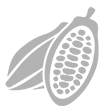
Subsidiaries and Divisions
Get to know more about the function of our board in helping us achieving our goals and visions
This website is still under construction, hence some information may be incomplete. Please bear with us as we work to finalise the process.

Get to know more about the function of our board in helping us achieving our goals and visions
 Cocoa
Cocoa
Cocoa plays an important role in the economy of Ghana. The cocoa industry employs approximately 800,000 farm families spread over six of the ten regions of Ghana. The crop generates about $2 billion in foreign exchange annually and is a major contributor to Government Revenue and GDP. Cocoa products like chocolate, pebbles, and cocoa powder are used by many Ghanaians.
The coca beans were first introduced to Ghana by the Dutch missionaries at the beginning of the 19th century. Its widespread cultivation is however attributed to Tetteh Quarshie, a Ghanaian blacksmith of Osu in Accra. He lived and worked in Fernando Po (now Equatorial Guinea) for several years and on his return to Ghana in 1879, brought with him the Amelonado Cocoa pods. He established a farm at Akwapim Mampong in the Eastern Region which turned into a nursery for all pioneering Cocoa farmers in Ghana. His legacy is the Cocoa bean that has become the backbone of the Ghana Economy.
Cocoa cultivation, after Tetteh Quarshie, assumed commercial dimensions and spread to all forest areas of the country, particularly Eastern, Ashanti, Brong Ahafo, Volta, Central and Western Regions. Cocoa pods mature and ripe throughout the year.
Cocoa is harvested by cutting the ripe pods from the trees, breaking them open and extracting the beans. The beans are fermented for 6 or 7 days with two/three turnings before drying for another 7 days in the sun. The beans are then bagged, graded and sealed for export.
In recognition of the contribution of cocoa to the development of Ghana, the government, in 1947, established the then Cocoa Marketing Board (CMB), as the main agency responsible for the development of the industry.
We use cookies to ensure we give you the best experience. If you continue, we'll assume that you're happy to receive all cookies. If you would like, you can read more about our cookies and privacy and change your settings at any time.